Juan A Martinez, 1987
The use of the human figure in art as a means of visual discourse on humanity is one of the most persistent tendencies in western art, even though it has had its ups and downs in the twentieth century. In the 1980s the strong return of figurative painting has renewed attention to the potential of the human figure in art. It is roughly in this context that l see the work of Arturo Rodríguez. Since his emergence as an artist a decade ago, Arturo has been partial to drawing, collage, and painting the human form with an interest in the exploration of the psyche.
In his early works from about 1978 to 1980, such as The Prisoner and the Debris series, human characters are torn apart, apparently brutalized by their own emotional discharges and social pressures. The slashing marks of the pen or brush, distorted bodies and fragmented compositions reflect a violent and volatile humanity. These paintings and collages share many formal and conceptual elements with the 1930's surrealism of Dali as well as the later expressionism of Bacon.
The images of disintegrated body-consciousness gave way around 1982 to a more introspective, but equally disturbing presentation of the human condition. In oils like Survivors and those of the Madhouse series, the human figure is rendered in a more painterly, descriptive and personal style. The characters' empty expressions, tentative gestures, blurred and displaced body parts express mental disorder as oppose to physical brutality. Rodriguez' view of the world and humanity's place in it went from torture chamber to madhouse. The artistic relatives of the characters in these paintings are the alienated figures of Beckmann's later works, the madmen of Gericault, and Goya's brutes; their human counterparts are to be found not only in mental wards but in the streets of his neighborhood.
About 1985 Arturo's paintings underwent a change in style and content. They acquired a more descriptive drawing, richer palette, and a more normative view of humanity. In works like The Gathering 1986 and The Burden of Memory 1987, characters of all ages carry on improbable actions hardly acknowledging each others presence. These figures take on the role of Everyman, and their environment, which is usually the interior of a house or patio, acts as a stage. This view of the world and humanity as "Theatrum Mundi" still has its edge: Life is a theater of the absurd. In these works direct observation of nature increases and artistic influences are more diffuse; nevertheless they seem to pay homage to the Venetian school of painting in the brushwork, depth of color, and composition.
These three phases are only the highlights of an incipient, yet very productive artistic career. Rodriguez has focused on the human figure to establish a dialogue with the art of the past and to comment on the present human condition, particularly its propensity for irrationality. From the early visual screams to the more recent whispers about an out-of-joint humanity, change and growth have been key elements in his work. In fact, his recent works (1987) are already moving in a new direction towards lyrical fantasy. As usual, the latest paintings emerge naturally out of the previous works, reflect human concerns (apparently of a more autobiographical nature) and open fresh possibilities for a promising future.
In his early works from about 1978 to 1980, such as The Prisoner and the Debris series, human characters are torn apart, apparently brutalized by their own emotional discharges and social pressures. The slashing marks of the pen or brush, distorted bodies and fragmented compositions reflect a violent and volatile humanity. These paintings and collages share many formal and conceptual elements with the 1930's surrealism of Dali as well as the later expressionism of Bacon.
The images of disintegrated body-consciousness gave way around 1982 to a more introspective, but equally disturbing presentation of the human condition. In oils like Survivors and those of the Madhouse series, the human figure is rendered in a more painterly, descriptive and personal style. The characters' empty expressions, tentative gestures, blurred and displaced body parts express mental disorder as oppose to physical brutality. Rodriguez' view of the world and humanity's place in it went from torture chamber to madhouse. The artistic relatives of the characters in these paintings are the alienated figures of Beckmann's later works, the madmen of Gericault, and Goya's brutes; their human counterparts are to be found not only in mental wards but in the streets of his neighborhood.
About 1985 Arturo's paintings underwent a change in style and content. They acquired a more descriptive drawing, richer palette, and a more normative view of humanity. In works like The Gathering 1986 and The Burden of Memory 1987, characters of all ages carry on improbable actions hardly acknowledging each others presence. These figures take on the role of Everyman, and their environment, which is usually the interior of a house or patio, acts as a stage. This view of the world and humanity as "Theatrum Mundi" still has its edge: Life is a theater of the absurd. In these works direct observation of nature increases and artistic influences are more diffuse; nevertheless they seem to pay homage to the Venetian school of painting in the brushwork, depth of color, and composition.
These three phases are only the highlights of an incipient, yet very productive artistic career. Rodriguez has focused on the human figure to establish a dialogue with the art of the past and to comment on the present human condition, particularly its propensity for irrationality. From the early visual screams to the more recent whispers about an out-of-joint humanity, change and growth have been key elements in his work. In fact, his recent works (1987) are already moving in a new direction towards lyrical fantasy. As usual, the latest paintings emerge naturally out of the previous works, reflect human concerns (apparently of a more autobiographical nature) and open fresh possibilities for a promising future.
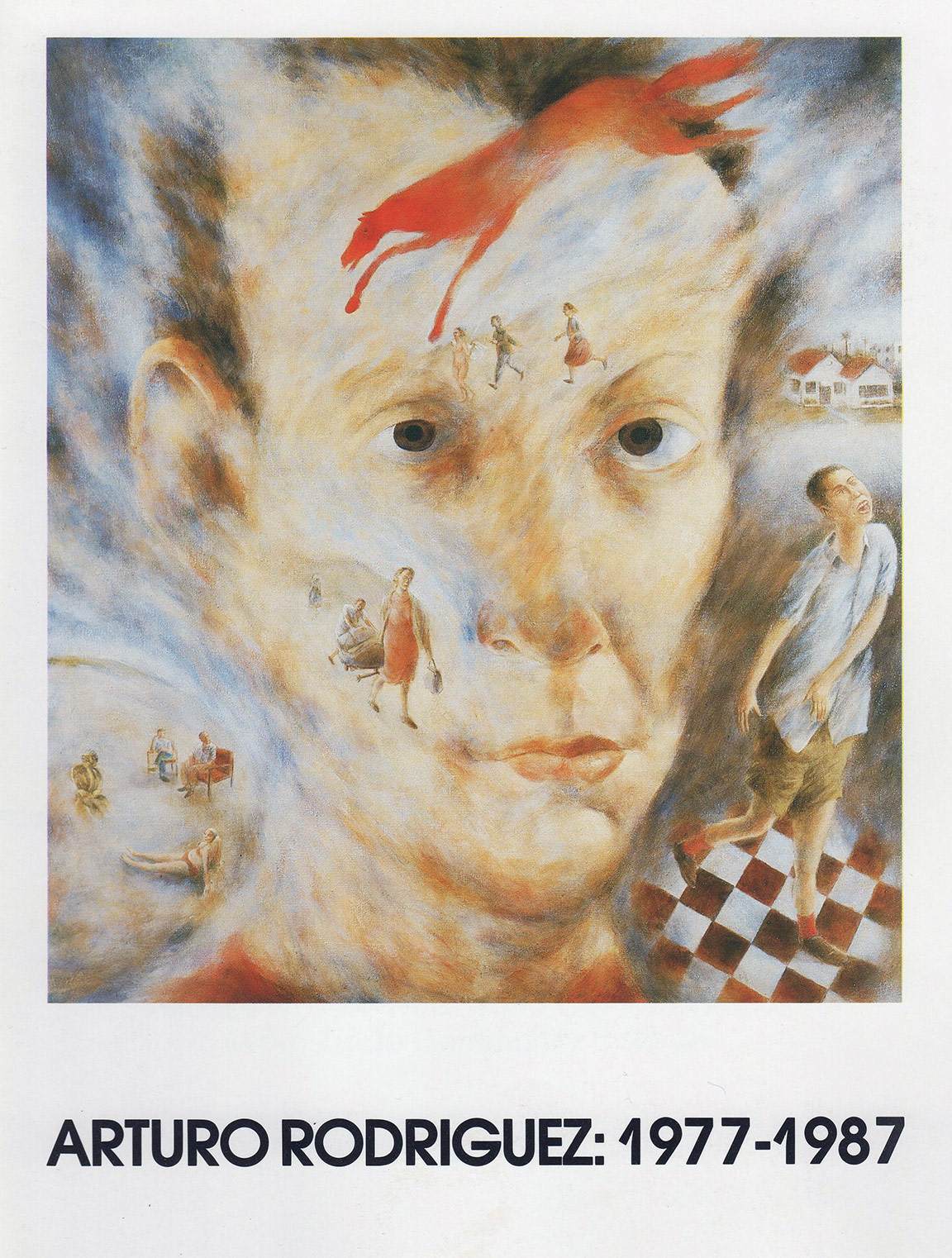
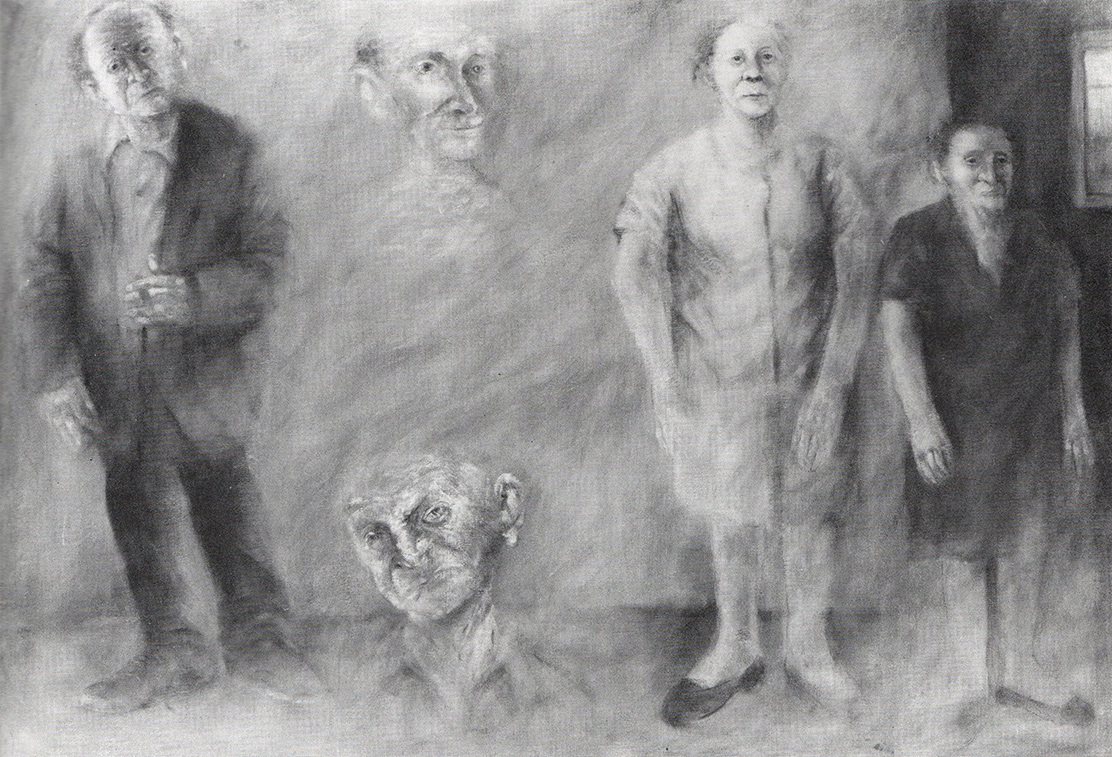
Survivors
1984
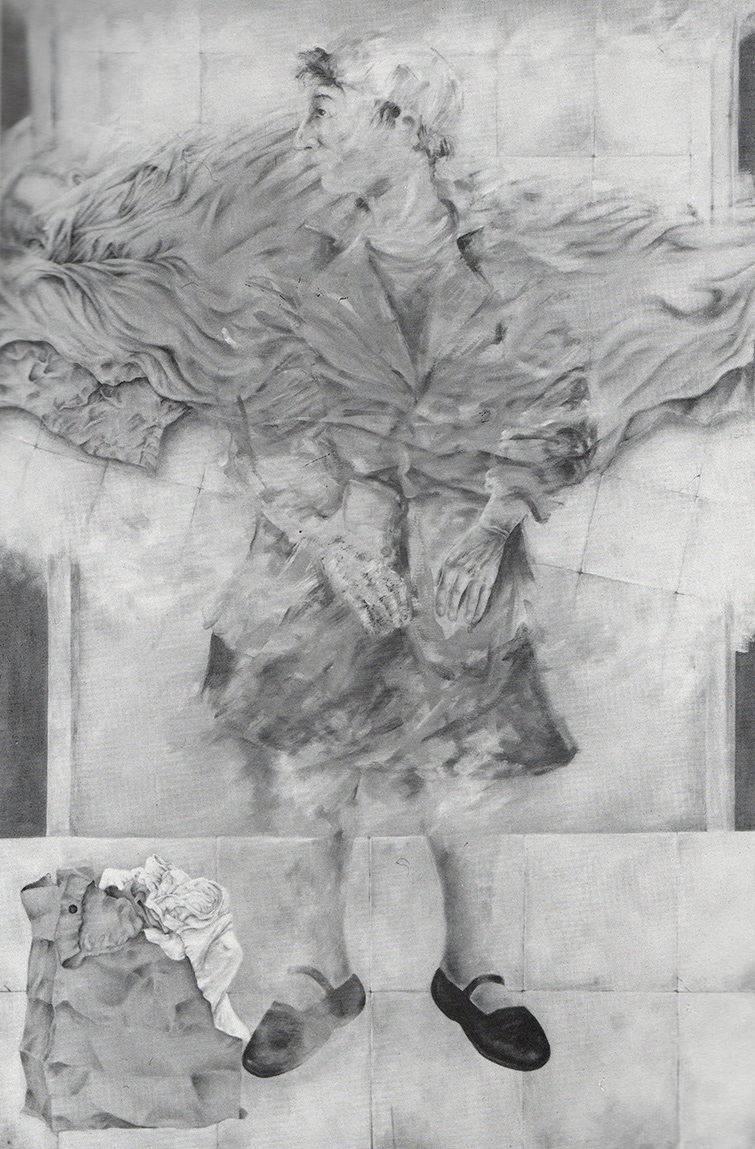
Mad House
1982
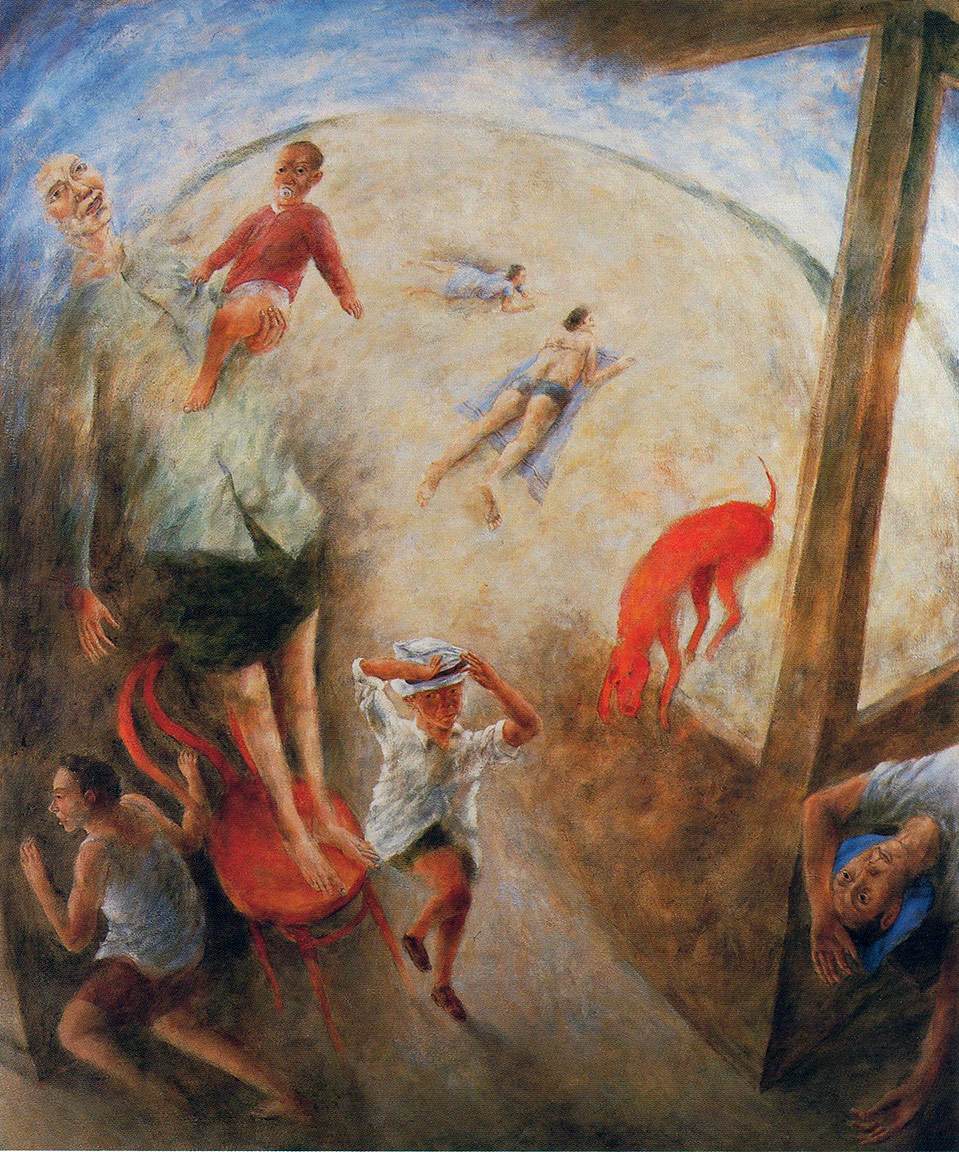
The Burden of Memory
1987
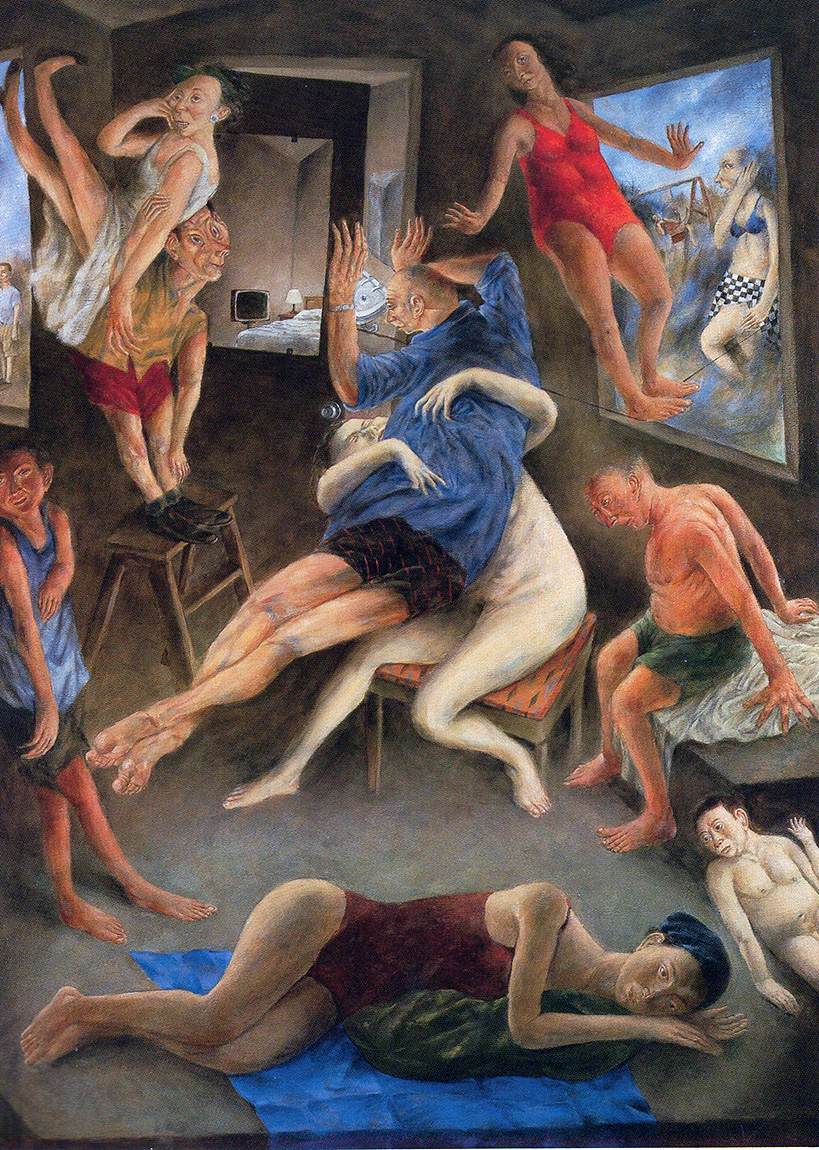
The Gathering
1986